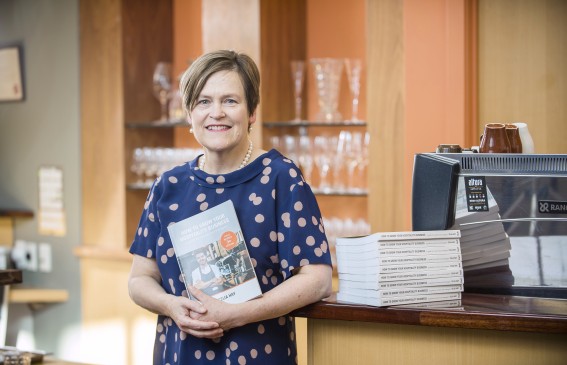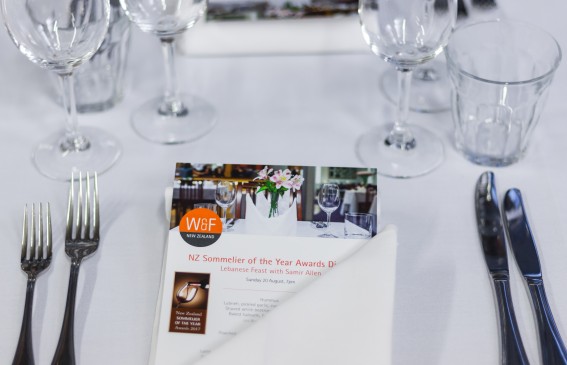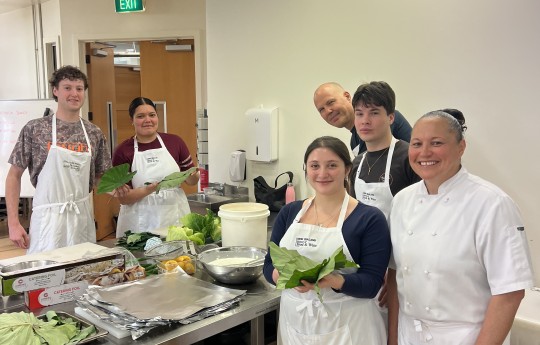Creating with Choux
Choux Pastry Creations
Celia Hay shares the secrets of how to make versatile choux pastry.
Choux pastry, the base of pastries such as profiteroles, eclairs and gougere is essentially a paste, that when baked, captures steam within it to puff up and produce a hollow case. It's the combination of water and eggs that provides the lift.
IT’S ALL IN THE SHAPE
Choux pastry is transformed into a number of popular pastries.
- Profiteroles or choux puffs – one teaspoon of choux in a round ball. For a smooth effect, dampen your finger with water and then you can pat down any spikes.
- Eclairs – 7 cm lengths of choux paste
- Croquembouche is the name of the cone-shaped castle of choux puffs – “glued” together with spun sugar or chocolate.
- Gougere are choux puffs with cheese in the paste.
- Paris Brest is made by piping a series of large circles of choux pastry. It’s name is from Paris – Brest cycle race and the shape is of a wheel! It is usually cut in half and then filled with cream or pastry.
- Beignets are made from deep fried choux paste and split open and filled when cool.
- Churros are a variation on the choux recipe – without the egg - deep fried and then dipped in chocolate or sugar.
HOW TO MAKE CHOUX PASTRY
Makes about 16 – 20 puffs
220 ml water 85 g butter
105 g flour pinch of salt
2 - 3 medium-sized eggs
Method
- Preheat the oven to 180C.
- Place the water into a heavy saucepan. Add the butter. Heat slowly to melt the butter then turn up the heat and bring to a rolling boil.
- Sieve the flour and salt. Tip into the boiling mixture. Quickly, with a wooden spoon, beat the flour and water together. Remove from the heat after 30 seconds. Keep mixing together off the heat until the paste becomes thick and leaves the side of the saucepan. This is called a panade.
- Allow the paste to cool for 4- 5 minutes.
- Beat in the eggs, one at a time, until the paste is soft, shiny and smooth. If the eggs are large, it may not be necessary to add all of them. The mixture should be of a dropping consistency – should drop off a spoon in a blob - and not be too runny.
- Line a baking sheet with baking paper. Drop the paste into a piping bag or using two spoons, lift and scoop onto the tray. Leave about 2 centimetres between each blob of pastry.
STEP BY STEP
Place the water into a heavy saucepan, add the butter and heat slowly to melt the butter.
Turn up the heat and bring to a rolling boil.

Tip the sieved flour and salt into the boiling mixture.
Quickly, with a wooden spoon, beat the flour and water together.

Remove from the heat after 30 seconds.
Keep mixing together off the heat until the paste becomes thick and leaves the side of the saucepan.
This is called a panade. Allow the paste to cool for 4- 5 minutes.

Beat in the eggs, one at a time, until the paste is soft, shiny and smooth.
If the eggs are large, it may not be necessary to add all of them.
The mixture should be of a dropping consistency – should drop off a spoon in a blob.

Line a baking tray with baking paper.
Drop the paste into a piping bag or, using two spoons, lift and scoop onto the tray.
Leave about 2 centimetres between each dollop of pastry.
Baking tips
Avoid the temptation of opening the oven door for the first 10 – 15 minutes as this will effect the quality of the lift in the pastry.
When the puffs look crisp, some people like to take them out of the oven, stab with a skewer to remove the steam and put them back in the oven upside down for another 5 minutes.
- For a golden brown puff - bake at 180C for 20 – 30 minutes
- For a crisper pastry – bake at 200C for 15 – 20 minutes

TO SERVE

Melt some 150 - 200 g dark chocolate pieces in a metal bowl, heated with simmering water.

Dip the choux puff into the melted chocolate to coat the top.

Finally, fill the choux puffs with whipped cream and serve.
For something more dramatic, pile the filled choux puffs on top of each other to make a delicious castle.
Follow this link to view Celia's article in Bite Magazine.







